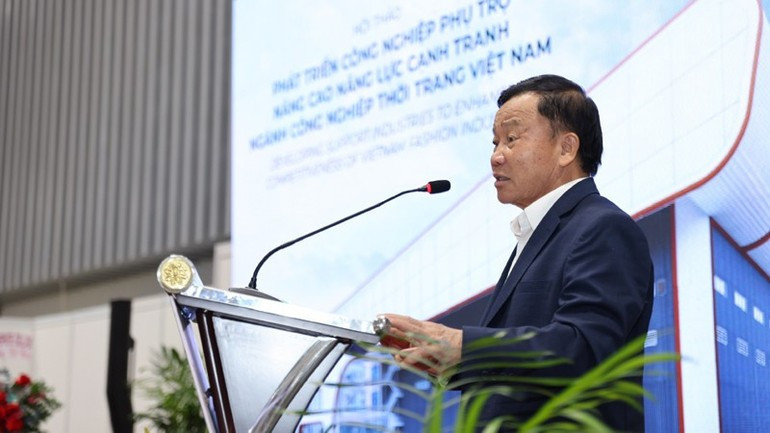Viet Nam aims to boost value of its fashion industry
On July 9, at the Saigon Exhibition and Convention Centre (SECC), the Viet Nam Leather, Footwear and Handbag Association (Lefaso) organised the 25th International Leather and Footwear Expo, with the participation of over 800 leather and footwear enterprises from around the world.

Speaking at the seminar on developing supporting Industries, enhancing the competitiveness of Viet Nam’s fashion industry held within the framework of the expo, Lefaso Chairman Nguyen Duc Thuan stated that the textile, garment, leather and footwear industries are among Viet Nam’s key economic sectors, recording export turnover of 72 billion USD in 2024, with an average growth rate of 10%. The sectors employ nearly 5 million workers, making a significant contribution to the development of the labour market, employment and social welfare.
According to Nguyen Duc Thuan, the implementation of the strategy for the development of Viet Nam’s Textile, Garment, Leather and Footwear Industry to 2030, with a vision to 2035, along with Government Resolution No. 115/NQ-CP dated August 6, 2020, on solutions to promote the development of the sector, will upgrade the supply chain of Viet Nam’s fashion industry towards supply diversification, proactiveness and sustainability, and deeper integration into the global supply chain.
To realise this strategy, the Viet Nam Textile and Apparel Association (Vitas) and Lefaso have proposed the establishment of the Viet Nam Fashion Industry Supply Chain Development Research Centre for the 2026–2030 period. The centre aims to connect and develop the fashion supply chain; display, introduce, and test new materials and technologies.

According to Tran Viet Hoa, Director General of the Industry Agency under the Ministry of Industry and Trade, in the trend of strengthening internal capacity and self-sufficiency in raw materials, particularly in the textile, garment, leather and footwear sectors, the Industry Agency will advise ministry leaders on developing policies in line with new development trends.
Notably, it will work to establish the Viet Nam Fashion Industry Supply Chain Development Research Centre as a hub for technology transfer, a bridge connecting enterprises to foreign markets, and a platform for rapid access to advanced technologies and raw material self-sufficiency.
Sharing at the seminar, Vitas Deputy Secretary General Nguyen Thi Tuyet Mai emphasised that although Viet Nam’s textile and garment industry ranks second globally, with exports exceeding 44 billion USD in 2024 and employing over 2.5 million direct workers, it remains heavily reliant on imported raw materials. This makes it challenging to meet rules of origin under new-generation trade agreements or comply with the stringent requirements of demanding markets such as the US and the EU.
Lefaso Vice Chairman Diep Thanh Kiet added that it is time to address the issue of proactively sourcing raw and auxiliary materials. Within the next five years at the latest, the localisation rate of these materials must exceed 70%. This would not only meet the requirements of importing countries but also help enterprises take control of supply sources and the export output of Viet Nam’s products.








